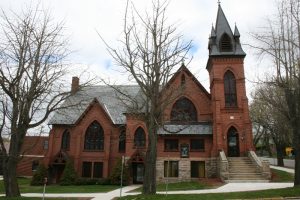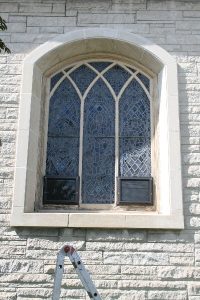
Increased Longevity for Stained Glass Windows
If and when protective glazing is installed, expect your windows to last longer than without it. Now, how do you determine whether or not you really need it, to begin with? Chances are you’ll want to consult with an expert, like someone from Cumberland Stained Glass. He or she will consider the structure, age and condition of the windows in question. Furthermore, he or she will take into account materials used to make the windows, as well as the methods used in their fabrication. Some questions an expert would ask you, if they weren’t able to see the windows in person, would include, “Are they painted? Is the came made from lead, zinc or copper? What’s the existing frame made of?” If the windows are located in a neighborhood prone to vandalism, stained glass windows should be protected in all ways possible, in order to deter damage or theft.
Protection For Stained Glass Windows

Energy Saver Stained Glass Windows
Over time, stained windows might need protective glazing to boost their ability to conserve energy. You see, the putty with which a window is sealed is usually made with linseed or soya oil. That oil dries and shrinks after a number of years, with the putty hardening and cracking– not good. When putty crumbles and falls out, the window will leak both water and air, causing heat loss. It’s no wonder, then, that a lot of older churches with stained glass windows have such high heating bills if they don’t take care of such problems quickly… One solution is to add protective glazing; it won’t solve the problem of a deteriorating window, but it can lessen the problem for a while.
A Protector of the Beauty of Stained Glass Windows
Have you ever seen a broken stained glass window? It’ll break your heart; how could someone purposely throw a rock through one to try and ruin such beauty? Stuff like that happens, though. If someone is “mad at God,” one of the first things they’ll do is try and break a church’s stained glass windows. Protective glazing, though, is one line of defense against breakage. The glazing helps protect windows from rocks, baseballs, hailstones and more.
Other Advantages

With regards to the design of protective glazing, you’ll want to make sure it serves its function of protection but doesn’t harm the stained glass. It should be removable when needed– to do cleanings/restoration in the future. And it should look nice– “aesthetically sensitive” to the building where it will be seen. Oh, and proper ventilation is important, too.
How Cumberland Stained Glass Can Help You Through the Options
Someone from Cumberland Stained Glass can talk with you about what would work best for your stained glass situation. For instance, would glass or plastic protective glazing be best for you? Would you need tempered or laminated glass? If plastic is the choice, would it make sense to use acrylic or Polycarbonate? Would it be best to use full, plain sheets or to choose a leaded pattern, which often involves geometric shapes such as diamonds or rectangles? Finally, with protective glazing, the question comes up: “Should it be vented to the exterior or interior?” That’s up to you and your consultant to decide. Ultimately, you want your windows to be protected, vented, and last a long time in good condition.
Cumberland Stained Glass would be glad to talk with you about vented protective glazing for stained glass windows; please call us today at 717-691-8290.
